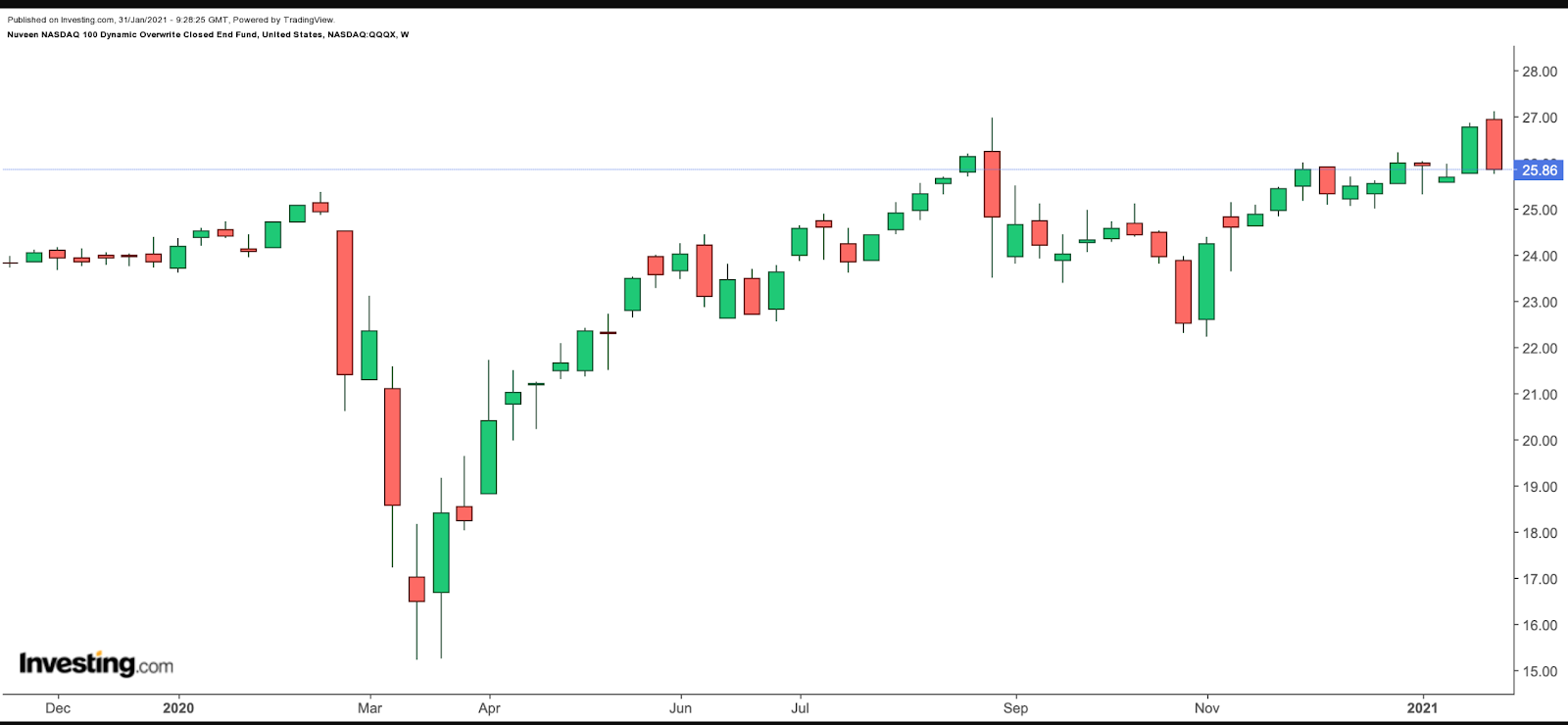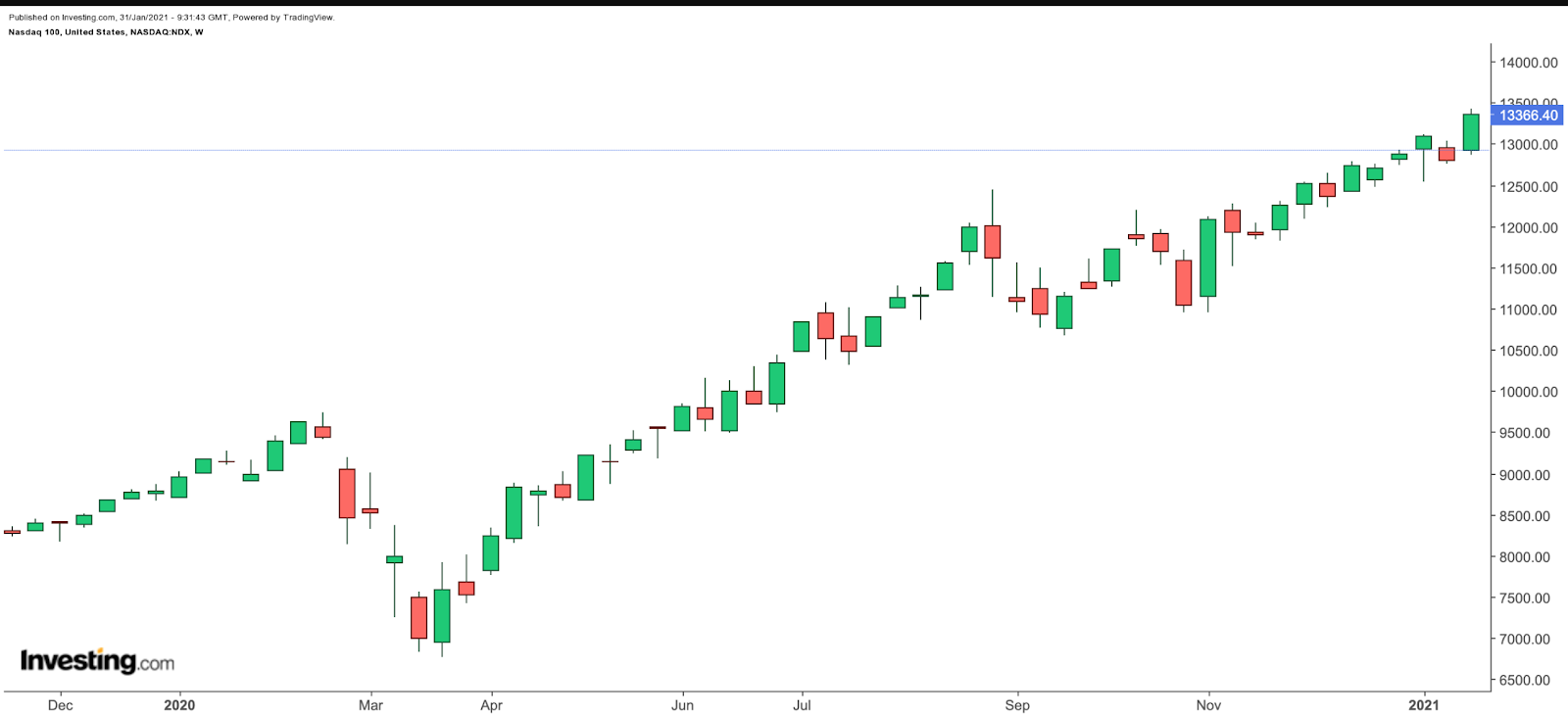Equity markets are volatile at the moment. The choppiness reminds most investors of the importance of diversification, such as including defensive assets in portfolios. Meanwhile, in the current low interest rate environment, passive income-seekers may be looking for ways to add income-generating products to their portfolios.
Different assets are appropriate in the search for stable yield, especially as volatility and the potential for downside risk increase. One such product that has been getting attention is a covered call fund.
Let's delve into the covered call space.
Options Have Different Uses
Options are derivative (or secondary) financial products. An option contract's value is based on an asset, such as a stock, index, bond, commodity, or currency.
There is a buyer (owner) and the seller (writer) of an option in a transaction. A "call" or a "call option" gives the owner the right to buy the underlying asset—such as a stock—at a specified price during a fixed period stated in the option contract.
An option contract has an expiration date by which contract holders have to decide if they should exercise the option or let it expire worthless. For instance, in the US, monthly equity options typically stop trading on the third Friday of the expiration month. So, monthly stock options expiring in February 2021 will cease trading on Friday, Feb. 19.
The buyer of a monthly equity option has the right, but not the obligation, to buy (or "call away") an agreed quantity of an underlying stock at the strike price from the option writer, until trading ends on the third Friday of the month. We must note that the actual technical expiry day is typically the Saturday following the third Friday. However, options stop trading on that Friday.
This limited time-span of an option contract creates unique implications for both the holder and seller. Academic research highlights:
"Options are a mechanism for trading on information about future equity volatility... [O]ptions order flows contain information about the future direction of the underlying asset."
Option contracts provide higher leverage, leading to both greater potential profits and potential losses. They can be used for speculation or hedging as part of a risk management strategy, both by individual traders but also by financial institutions and corporations.
News headlines regarding stocks like GameStop (NYSE:GME) and AMC Entertainment (NYSE:AMC) have highlighted the increased use of options in equity markets and their potential effects not only on portfolios, but also on the functioning of broader markets. Last week, many brokers introduced restrictions on placing (temporary) equity and/or options trades on a number of securities, causing a heated debate among market participants.
Finally, corporations outside equity markets also use derivative products. For example, options are important risk-management tools for importers and exporters for hedging currency exchange risk.
Covered Calls To Generate Income
One option contract typically represents 100 shares of a given stock. Thus to devise a covered call strategy, an investor must own 100 shares for every call contract they plan to sell. The position involves a trader writing a call option against stock they either already hold or buy at that moment.
If an investor simultaneously buys 100 shares of a stock and writes a call option against that stock position, it is known as a "buy-write" transaction. Thus the position is created on a share-for-share basis.
When an investor writes a covered call, they sell someone else the right to purchase 100 shares of the stock that they already own, at a specific price, within a specified timeframe.
Option buyers have to pay a certain amount of "premium'' to option writers, so sellers are typically motivated by this premium or income.
A covered call is a hedged strategy as the writer could deliver the stock if it is called. Covered calls are among the most widely-used options strategies. Yet, in rising market conditions, their use could hinder returns.
Nuveen NASDAQ 100 Dynamic Overwrite Closed End Fund
- Current Price: $25.86
- 52-Week Range: $15.24 - $27.12
- Current Distribution (Quarterly): $0.39
- Monthly Equivalent Distribution: $0.13
- Distribution Rate on Market Price: 6.00%
- Net Expense Ratio: 0.94 % per year
The Nuveen NASDAQ 100 Dynamic Overwrite Closed End Fund (NASDAQ:QQQX) enables investors to participate in a portion of the returns of the NASDAQ 100 index while generating cash flow from the sale of call options on 35%-75% of the equity portfolio.
Fund managers highlight the objective as achieving an attractive total return with less volatility than the NASDAQ 100 index. When they believe the index is likely to be flat or declining, they increase the covered call percentage to receive more premium and generate extra cash flow from the sale of more call options.
On the other hand, when they believe markets are to continue rising, they reduce the percentage. At present, 58% of the underlying equities are overwritten by call options.
QQQX is a closed-end fund (CEF) that trades like an equity or an exchange-traded fund (ETF). In general, closed-end funds share many similarities with ETFs. The Nuveen NASDAQ 100 Dynamic Overwrite Closed End Fund started trading in January 2007, and total assets under management stand at $1.1 billion.
It currently has 119 stocks. The top ten names comprise over 70% of the roster. Apple (NASDAQ:AAPL), Microsoft (NASDAQ:MSFT), Amazon (NASDAQ:AMZN), Alphabet (NASDAQ:GOOGL) (NASDAQ:GOOG) and Facebook (NASDAQ:FB) lead the names in the fund.
In addition to the distributions paid out quarterly, the fund has returned close to 6% over the past year. Put another way, the quarterly income generated has not come at the expense of capital, and the fund has managed to capture some of the NASDAQ 100's gains.
But we should remind readers that in the past 12 months, the NASDAQ 100 Index is up 42%. Due to the risk/return profile of a covered call strategy, an ETF like QQQX cannot beat the returns of the NASDAQ 100.
Those investors interested in dividends, as well as potential capital appreciation in the current volatile markets, might want to do further due diligence on the fund.
